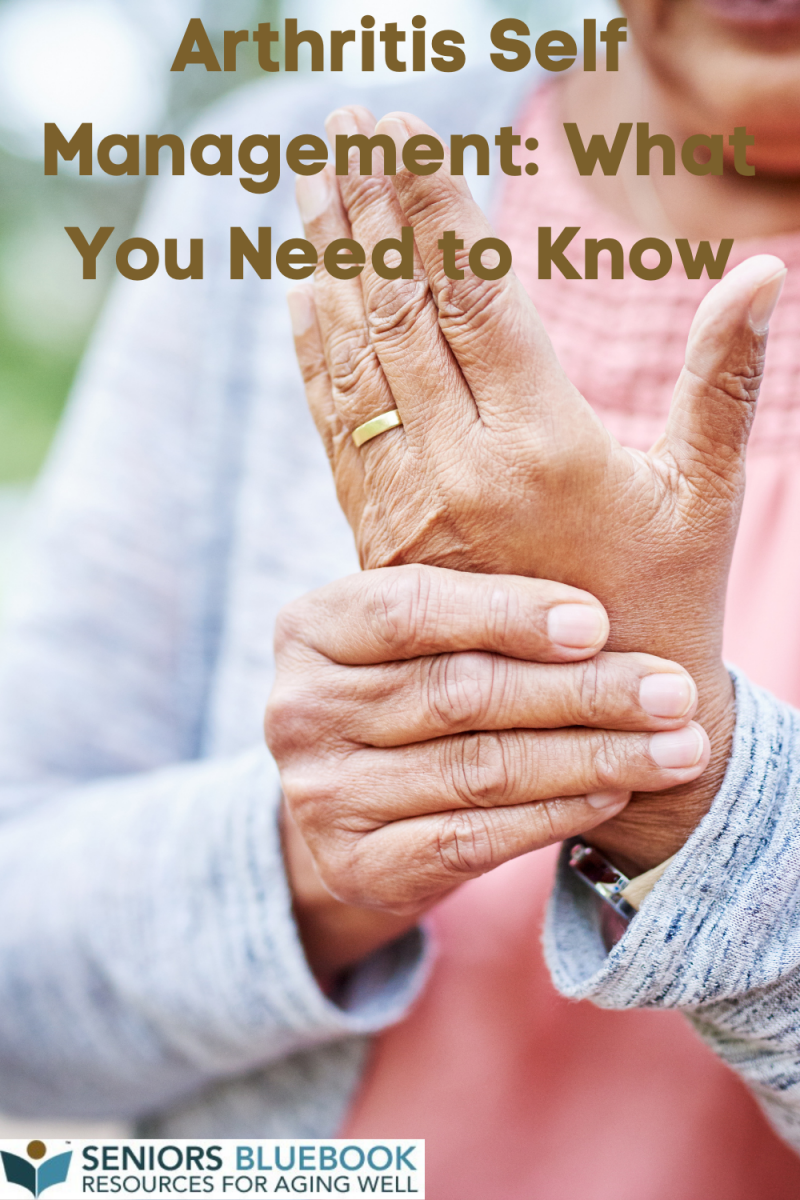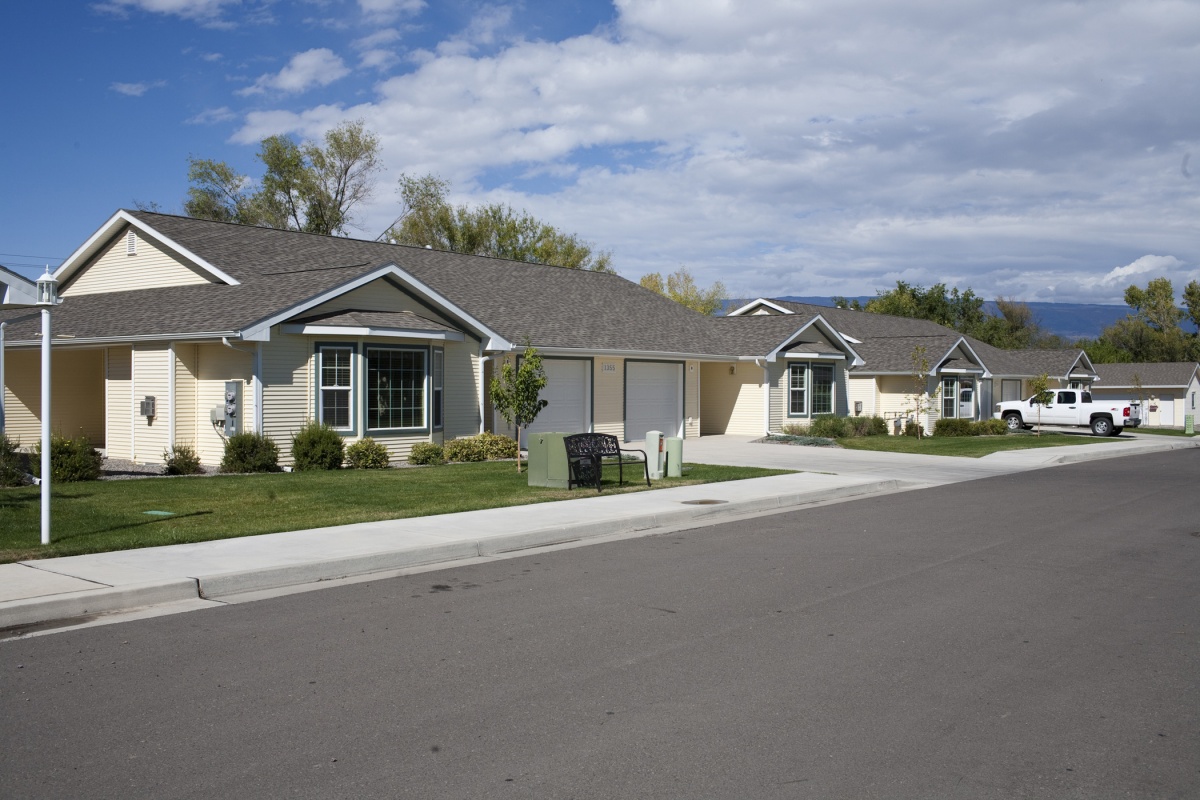Arthritis Self Management: What You Need to Know
Crossroads at Delta
Dec 27, 2021
Colorado - Western Slope
Email US
Click to Email UsBe Organized Take charge of your treatment plan by keeping track of symptoms, pain levels, medications and possible side effects so together with your doctor, you can determine what works best for you. Use our health tracker to get started.
Manage Pain You dont want pain to take over your life. Try eight natural pain therapies that can help you feel better. Talk to your doctor about the best medications to ease your pain.
Address The Emotional Side Coping with a new diagnosis and the pain and limitations that may come can wear on you emotionally. Learn more about the emotional effects so you can better manage them.
Tackle Fatigue Fatigue can be a one-two punch. It can be caused by your disease or the daily stress of living with a chronic disease. There are simple ways to manage fatigue.
Improve Sleep Pain and sleep problems can go hand in hand. Pain makes it hard to sleep. Poor sleep can worsen pain. Use these tips for sleeping better to help you get the rest you need.
Get Moving It maybe the last thing you want to do when youre in pain, but exercise will help. It strengthens muscles that support your painful joints, keeps joints mobile, helps you get restful sleep, boosts mood and helps you lose excess pounds that add stress to joints. See how you can start an exercise program.
Balance Activity With Rest Rest is important when your disease is active, and your joints feel painful, swollen or stiff. Lighten your schedule and obligations and ask for help when you need to. Pace yourself throughout your day and take breaks when you can. Get some tips for pacing yourself.
Eat A Balanced Diet Healthy eating (plus exercise) can help you reach and keep a healthy weight. Add anti-inflammatory foods that are rich in antioxidants to help control inflammation. Discover what makes the ultimate arthritis diet.
Other Articles You May Like
Understanding the Role of a Geriatric Care Manager in the Western Slope of Colorado
As the senior population continues to grow across the Western Slope of Colorado, so does the need for personalized, expert guidance in navigating aging-related challenges. One of the most valuable resources for families and seniors is a Geriatric Care Manager (GCM)a professional who serves as an advocate, guide, and coordinator in the complex world of elder care.In this blog, well explore what a Geriatric Care Manager does, how they can benefit aging adults and their families, and where to find these services across the Western Slope region. What Is a Geriatric Care Manager?A Geriatric Care Managersometimes referred to as an Aging Life Care Professionalis a licensed expert in fields like nursing, social work, or gerontology. Their role is to assess, plan, and coordinate care for older adults, with the ultimate goal of improving quality of life and reducing family stress.Whether a senior lives independently, with family, or in a care facility, a Geriatric Care Manager can step in to create customized care strategies and ensure those plans are carried out effectively. How a Geriatric Care Manager Can HelpFamilies often feel overwhelmed by the many decisions involved in senior careespecially when distance or limited time is a factor. A Geriatric Care Manager can provide:Comprehensive assessments of medical, social, and safety needsDevelopment and oversight of care plansCoordination of services, such as in-home care, transportation, or therapyCrisis intervention and support during transitionsFamily mediation and educationLocal resource navigation specific to the seniors locationThese professionals act as trusted partners and advocates for older adults, helping families make informed decisions with confidence. Why the Western Slope of Colorado Benefits from Geriatric Care ManagersThe Western Slope of Coloradowhich includes communities like Grand Junction, Montrose, and Glenwood Springsoffers a unique blend of small-town values and scenic beauty. While its a desirable place to age, it can also present challenges when it comes to accessing specialized care and services.A Geriatric Care Manager who understands the local healthcare landscape and senior resource network is a valuable asset in this region. From coordinating with local physicians to finding the right assisted living communities or home care providers, a GCM ensures nothing falls through the cracks.Explore Senior Resources in the Western Slope of ColoradoBrowse Geriatric Care Services in Western Slope When Should You Hire a Geriatric Care Manager?You might consider working with a GCM in the following situations:A senior has multiple chronic conditions and requires coordinated careFamily members live far away or cannot provide daily oversightTheres confusion about local resources or long-term care optionsTransitions between care settings (home to hospital, rehab to assisted living) are approachingCaregiving responsibilities are causing family conflict or burnoutEarly involvement with a Geriatric Care Manager can prevent future crises and ensure aging adults maintain independence for as long as possible. How to Choose a Geriatric Care ManagerWhen selecting a Geriatric Care Manager in the Western Slope, consider these tips:Look for credentials such as RN, LCSW, or certification from the Aging Life Care AssociationAsk for experience related to your specific needs (dementia care, disability support, etc.)Clarify how services are billedsome work hourly, others on a retainerEnsure they are familiar with regional healthcare providers and senior living optionsTake time to speak with several professionals before choosing the right fit for your loved one. Final Thoughts A Geriatric Care Manager can be a vital partner in helping older adults on the Western Slope of Colorado age with dignity, safety, and support. Whether you're facing a sudden health change or simply planning for the future, having a knowledgeable professional by your side can bring clarity and peace of mind.
Understanding Long Term Care Insurance in the Western Slope of Colorado
As the population of older adults continues to grow, planning for future care needs becomes increasingly important. One essential tool that helps seniors prepare for the unexpected is long term care insurance. For residents in the Western Slope of Colorado, where aging in place and quality of life is highly valued, understanding how long-term care insurance works can help individuals and families make confident decisions about their future.This guide explains what long term care insurance is, why it matters, and how to explore your options across the Western Slope. What Is Long Term Care Insurance?Long term care insurance helps cover the cost of services that support individuals who can no longer perform daily activities independently due to aging, illness, or disability. These services can include:In-home care (help with bathing, dressing, or meal preparation)Assisted livingSkilled nursing careMemory careAdult day careUnlike traditional health insurance or Medicare, long term care insurance is specifically designed to cover extended care needs that are not medically necessary but are vital for maintaining quality of life. Why Consider Long Term Care Insurance?The need for long term care is a reality for many aging adults. According to recent studies, nearly 70% of people turning 65 will require some type of long-term care during their lives. Without insurance, the cost of care can quickly become a financial burden.Here are a few key reasons why long-term care insurance is worth considering:Financial protection: Helps reduce out-of-pocket expenses for extended carePreserves savings and assets: Prevents the need to deplete retirement savings or rely on familyProvides more choices: Gives access to a broader range of care options, including home-based careEases the burden on loved ones: Offers peace of mind and professional support Long Term Care Insurance in the Western Slope of ColoradoThe Western Slope is known for its scenic landscapes, rural charm, and strong community values. Aging residents in this region often prefer to remain in their homes or in local care communities, close to family and nature. As such, planning for long term care is especially important here, where access to high-quality care may require additional forethought due to geographic distance and provider availability.Seniors and their families in the Western Slope should start planning early and explore all their options to ensure access to the best care the region can offer.Helpful Tip:Start by learning about the providers and resources in your area. Explore local services here: Western Slope Senior Resources Directory Insurance Providers for Long Term Care When Should You Buy Long Term Care Insurance?The best time to purchase long term care insurance is before its neededtypically in your 50s or early 60s. Waiting too long can mean higher premiums or disqualification due to pre-existing conditions. If you're already retired, its still worth exploring your eligibility and comparing available plans. What Does Long Term Care Insurance Cover?Coverage depends on the policy, but most plans cover:Assistance with activities of daily living (ADLs)Care coordination servicesHome modifications for aging in placeFacility-based care like assisted living or skilled nursingRespite care for family caregiversSome policies may also offer inflation protection, allowing benefits to grow over time. Things to Consider When Comparing PlansChoosing the right long term care insurance policy involves several factors:Daily benefit amount: How much the policy will pay per dayBenefit period: How long benefits will last (e.g., 3 years, 5 years, lifetime)Elimination period: The waiting period before benefits beginCoverage settings: Whether care is covered in-home, in assisted living, or in nursing homesIts important to speak with a licensed insurance professional who understands both the policies and the needs of seniors in the Western Slope. Final Thoughts: Plan Today, Thrive TomorrowPlanning ahead with long term care insurance can make a significant difference in your financial future, care choices, and peace of mind. For seniors living in the Western Slope of Colorado, taking a proactive approach to long term care is a smart step toward preserving independence and quality of life. At Seniors Blue Book, were committed to providing neutral, comprehensive resources to help you make informed decisions. Use our platform to explore long term care services, speak with trusted professionals, and take the next step in your retirement planning journey.
Smart Medicare Planning in Western Slope, Colorado: What Seniors Need to Know
Navigating Medicare planning can feel overwhelming, especially as you approach retirement age or assist a loved one through the process. With so many coverage options, deadlines, and rules, its no wonder seniors across the Western Slope of Colorado are searching for clarity and guidance.Whether you're enrolling for the first time or reassessing your coverage, this local guide will help you understand how Medicare works, what to consider when choosing your plan, and where to find resources in the Western Slope region. What Is Medicare Planning?Medicare planning is the process of evaluating your healthcare needs, understanding your Medicare options, and selecting the coverage that best fits your lifestyle and budget. Proper planning ensures you're not only covered, but that you avoid unnecessary out-of-pocket expenses and coverage gaps. Why Medicare Planning Is ImportantChoosing the right Medicare plan isnt a one-size-fits-all decision. Your health conditions, prescription needs, travel habits, and financial situation all play a role in determining the best option for you.Effective planning helps:Avoid late enrollment penaltiesMaximize coverage for services and prescriptionsControl monthly premiums and out-of-pocket costsCoordinate additional benefits like dental, vision, or hearingWhether you're considering Original Medicare, Medicare Advantage, Medigap, or Part D prescription coverage, its essential to compare your choices carefully. Medicare in the Western Slope of Colorado: Local ConsiderationsThe Western Slope is a unique region with both urban and rural communities, and that affects how seniors access Medicare-related services. From Grand Junction to Montrose to smaller towns throughout the area, local resources and provider networks can vary.Here are a few things to keep in mind when planning for Medicare in the Western Slope:1. Provider Networks MatterMedicare Advantage plans often operate with specific provider networks. Before enrolling, confirm that your preferred doctors, hospitals, and specialists in the Western Slope are included in the plans network.2. Prescription Coverage May VaryNot all plans offer the same prescription drug coverage. Be sure to review the formulary (drug list) and pharmacy options available locally to avoid higher costs.3. Rural Access and TelehealthRural areas on the Western Slope may have fewer in-person options for specialists or Medicare consultants. Many seniors find that telehealth services or virtual Medicare planning appointments offer additional convenience and access to professionals who understand local nuances.4. Community Support and EducationLocal agencies, senior centers, and nonprofit organizations in the region often host educational events or offer one-on-one Medicare counseling to help seniors understand their options. Tips for Smart Medicare PlanningIf you're getting started with Medicare planning, here are a few steps to follow:Know your timeline Initial Enrollment Periods and Annual Enrollment Periods are important.Review your current healthcare needs Make a list of doctors, specialists, and prescriptions you want to keep.Compare plans Use Medicares online tools or local advisors to weigh your options.Seek out trusted guidance Look for unbiased assistance from local resources.Start exploring trusted senior resources in the Western Slope here: Western Slope Senior Resources DirectoryFor Medicare-specific resources, visit our planning section: Medicare Planning Resources in Western Slope Final Thoughts: Plan With ConfidenceMedicare is a vital part of your retirement planand getting it right can mean greater peace of mind and financial security. For residents of the Western Slope of Colorado, understanding your local healthcare landscape is just as important as choosing the right plan. At Seniors Blue Book, our mission is to be your neutral, reliable partner in navigating aging-related decisions. Whether you're comparing Medicare options or seeking trusted providers, were here to support your journey with clarity and care.
Local Services By This Author
Crossroads at Delta
Independent Living 1380 Aspen Way, Delta, Colorado, 81416For seniors who do not require daily assistance, Crossroads offers 26 two-bedroom independent living homes at Aspen Circle. We take away the responsibilities of owing a home so you can enjoy living. Crossroads is like a continuum of care campus offering Independent Living, Assisted Living, and Memory Care. Crossroads is the premier choice in senior living.
Crossroads at Delta
Assisted Living 1380 Aspen Way, Delta, Colorado, 81416Crossroads Assisted Living offers 24 hour person centered care including assistance with daily living activities, restaurant style dining, and social activities. Our 6 floor plans offer creative options for you or your loved one. Crossroads is like a continuum of care campus offering Independent Living, Assisted Living, and Memory Care. Crossroads provides peace of mind living.


